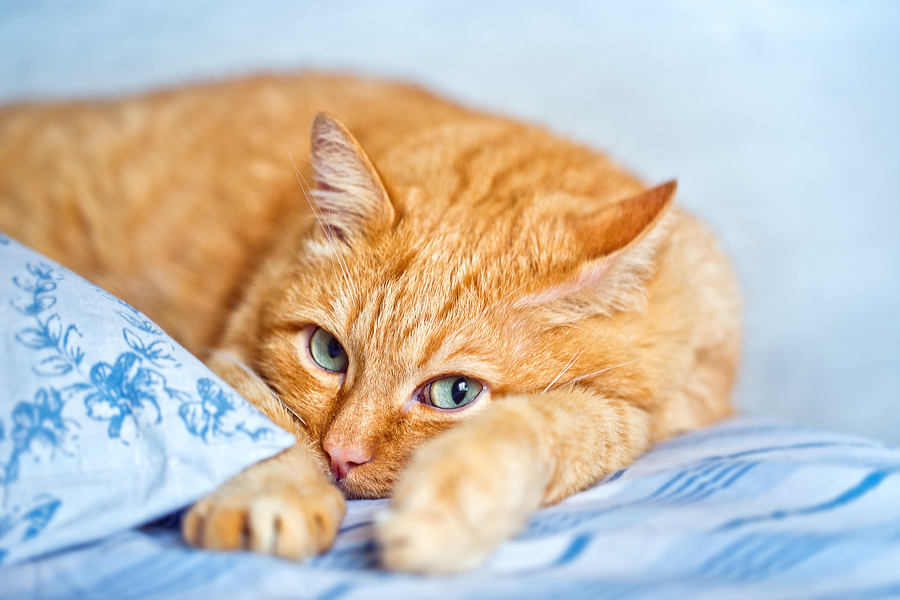This post may contain affiliate links. We are compensated for referring customers to our affiliate partners.
You’ve undoubtedly heard of certain cat breeds; the Siamese, the Maine Coon, even the Himalayan come to mind. Have you ever heard of the Ginger cat? Well, of course you have! But did you know that Ginger cats are not a specific breed? If you didn’t know this before today, don’t feel bad. Many people think that Ginger cats are a breed like the ones listed above, but truthfully, they are just named after their striking orange color.
Hello Orange!
Ginger cats are simply orange cats, like Garfield, Heathcliff, Orlando, Crookshanks, and the most popular orange cat of all: Morris from the 9-Lives cat food commercials. Ginger cats are also known as marmalade cats or red cats in other parts of the world, but Ginger seems to be more common in the U.S. Though they do not hold the title of being a breed, many people think that they are so special that they should be a breed. Since their coloring all depends on their breeding, it’s a wonder that they are not.
It’s All In The Genes
When it comes to how the Ginger gets his color, it all comes down to genes. The gene that produces the orange color in a cat is on the X chromosome. Female cats have 2 X’s so they need both X’s to have the orange gene in order to be born as Ginger cats. However, since males only need 1 X to become Ginger, there is a significantly higher number of male Gingers to female Gingers. Male Ginger cats father either tortoise shell cats or female Gingers and if both parents are Ginger cats, all of their kittens will be Ginger as well.
Fun Ginger Facts
In one survey, 189 cat owners in California were asked to rate their differently colored cats on a personality scale. The Ginger cats were rated as being the favorite pet as they are seen as being more friendly and approachable than any other colored cat in the survey. Of course we know that all cats are wonderful and friendly, but there’s just something special about those Gingers.
- They have 4 basic patterns over their orange fur; mackerel, ticked, striped, and classic.
- There is no such thing as a solid Ginger cat. Those who appear to be solid orange are not; there are stripes or markings of some degree somewhere on their fur.
- Winston Churchill’s orange tabby, Jock, was quite famous and attended many cabinet meetings with him.
- Ginger cats can be found in almost any breed, including Abyssinian, Persian, and American Bobtail.
- Ginger cats often find themselves getting into trouble because they are curious and very brave, often fearing very little.
- Eating and sleeping seem to be very common traits of the Ginger cat (remember Garfield?)
Though every cat is unique and has its own set of quirks, these are just some of the things you’ll find with a Ginger.
A Cat Food Guide For Your Ginger’s Nutrition
Feeding your Ginger cat relies on knowing which foods are better for them and which foods are not. No matter what food brand or variety you have, it is always in your best interest to read the label to discover the good the bad, and even the ugly things that are lurking in their meals. For example, Morris the Ginger cat might have been the spokesman for 9-Lives cat food, but looking at the ingredient list leaves much to be desired.
Cat Food Guide: 9 Lives Daily Essentials
The first ingredient in 9-Lives Daily Essentials is whole ground corn. Unfortunately, corn is one of the most widely known food allergens for cats. If your cat does not have a pre-existing allergy to this ingredient, he probably won’t have any trouble. But, cats are carnivores and do not digest plant based proteins well, so keep an eye on your cat for any digestion problems or stomach upset.
This cat food also includes artificial dyes. Yellow 5, yellow 6, blue 2, and red 40 have all been linked to hyperactivity, aggression, insomnia, allergic reactions, and even tumors. BHA is a preservative that has been banned for human consumption due to its link to cancer.
The good ingredients in this cat food are taurine, which is an essential amino acid that is critical for normal heart muscle function, vision, and reproduction in cats. Also good for your cat is salmon meal, an excellent source of high quality protein and extremely rich in healthy Omega 3 and Omega 6 fatty acids. Beef fat is an excellent source of meat protein.
Cat Food Guide: Blue Wilderness Adult Chicken
This is another popular cat food brand that is higher end; and you can see why. The first ingredient is deboned chicken, a very high quality meat source, followed by chicken meal and turkey meal which are fantastic sources of very healthy animal based proteins. The fact that they are listed as meal means that the moisture was removed prior to cooking, leaving a much higher protein percentage and providing far more beneficial nutrients to your cats than whole chicken.
You’ll see that the ingredient list is missing corn products, artificial preservatives, and dyes. It includes, however, many vitamins and minerals such as taurine and D3. It also contains alfalfa meal, a rich food that has trace minerals such as zinc, iron, and manganese; sweet potatoes, a great source of potassium, vitamin B, and beta-carotene; and flaxseed, a rich source of micronutrients, dietary fiber, vitamin B1, and the essential fatty acid alpha-linolenic acid, also known as omega-3.
No matter what color or breed your cat is, be sure that you’re feeding him the best ingredients you can find to keep him healthy, happy, and to keep that beautiful orange coat shinning.



